#peter alexander artist
Explore tagged Tumblr posts
Text
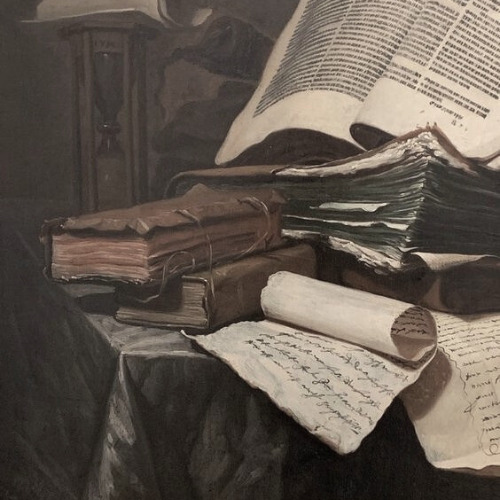





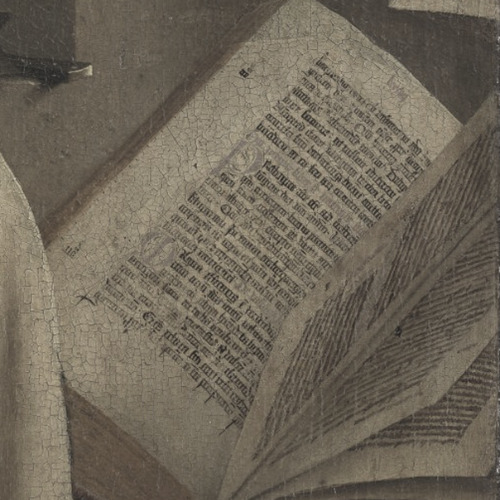

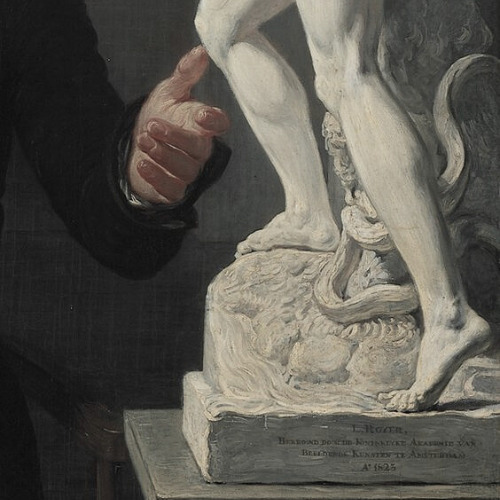
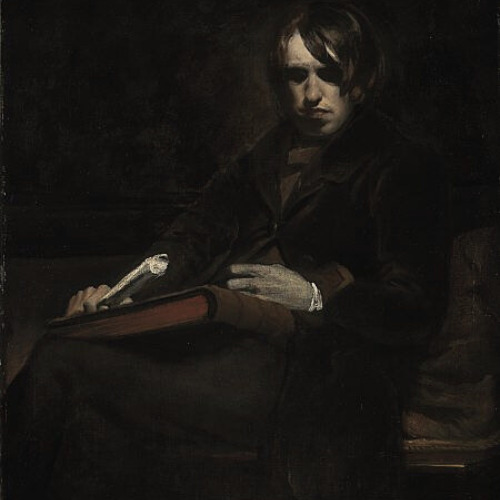


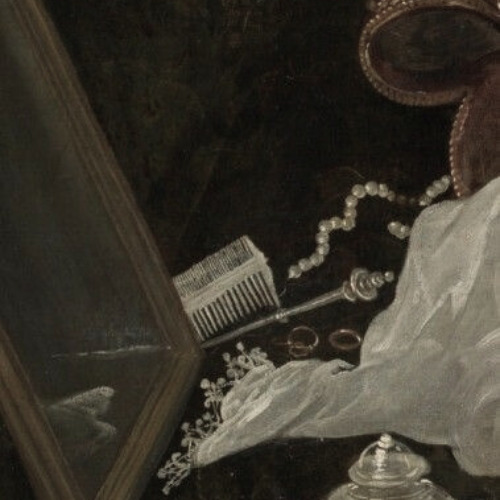


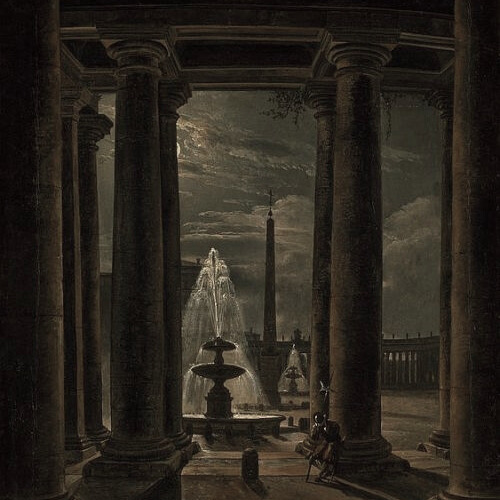

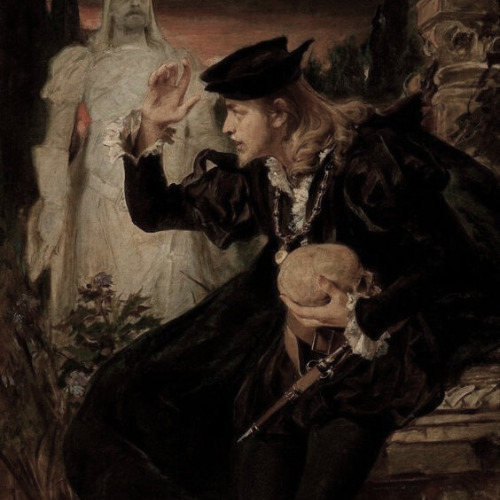
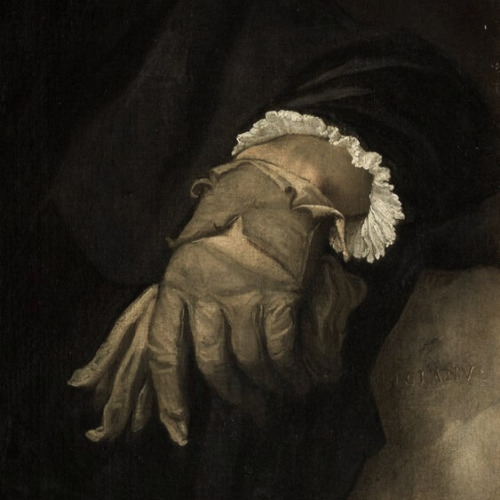

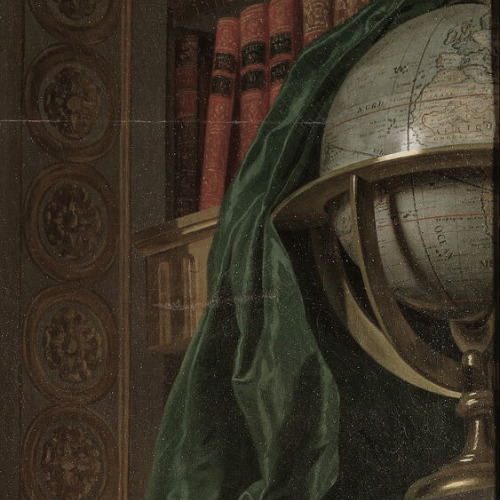



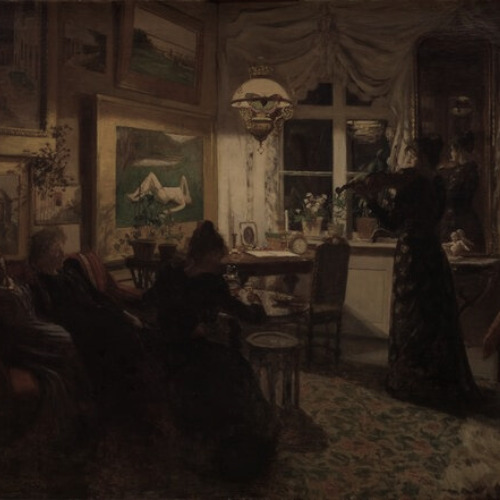



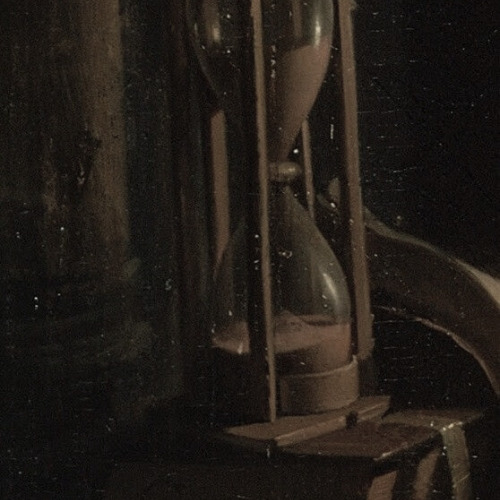

art aesthetics: dark acadmia
#cant find artist#artist is gerrit dou#artist is paul fischer#artist is james carroll beckwith#artist is sir anthony van dyck#artist is nicolas regnier#artist is hubert and jan van eyck#artist is eugene delacroix#artist is jan willem pieneman#artist is sir william fettes douglas#artist is wilhelm bendz#artist is carl holsoe#artist is jacopo tintoretto#artist is thomas wyck#artist is lindsay bernard hall#artist is franz ludwig catel#artist is pieter claesz#artist is pedro americo#artist is titian#artist is giorgio vasari#artist is alexander roslin#artist is jusepe de ribera#artist is anne francoise couloumy#-artist is carl holsoe#artist is anna petersen#artist is peter hasenclever#artist is irving ramsey wiles#artist is georges de la tour#artist is unknown-#art aesthetics
501 notes
·
View notes
Text

Peter Alexander (American 1934-2020, lived and worked in Los Angeles), Gardena (From the Barcelona Portfolio), 1988. Lithograph on Guarro paper, 18 x 20 in. (Source: Laguna Art Museum)
#art#artwork#modern art#contemporary art#modern artwork#contemporary artwork#20th century art#20th century modern art#20th century contemporary art#American art#modern American art#contemporary American art#American artist#Californian artist#LA artist#Los Angeles artist#LA art#Los Angeles art#Peter Alexander#California Dreaming#Made in LA#Laguna Art Museum
79 notes
·
View notes
Text

Peter Forster (1934-2021), ''The Rape of the Lock'', 1989 Source
57 notes
·
View notes
Note
Hello dear.. Please don't skip my message My name is Mohammed, from the afflicted and destroyed Gaza Strip, where life has become impossible and tragic, and where we see death and pain every moment and every day. Our children suffer from hunger, pain, deprivation and lack of medicine. The war deprived them of playing, school, and their most basic rights. They are now suffering from woes and tragedies. 😭😭 During the war, my wife gave birth to a child and I could not find any milk for him Our conditions are tragic, and we live in a shelter that lacks the minimum requirements for life and is plagued by diseases and epidemics Please help me save my children from the hell of the Gaza Strip and provide them with a decent life 😔 Your assistance, no matter how simple, is enough to ease the burden on us and help us overcome our crisis. Please sympathize with me and donate to me or contribute to sharing the campaign and spreading it widely
I'm so sorry I took so long to answer.
Vetted by 90ghost ! Low on funds!
https://gofund.me/0a610ee3
I'll add pictures so more people will see hopefully:

#gaza mutual aid#vetted gfm#artists on tumblr#dc comics#eat her ass#lex luthor#alexander luthor#katma tui#green lantern#dhmis notepad#dhmis#bjork#peter lorre#snively robotnik#the band ghost#monster cereals#count chocula#frankenberry#boo berry#cardinal copia#papa emeritus fanart#black manta#hal jordan#toyman#superman#dr psycho#wonder woman#papa nihil#papa emeritus iii#papa emeritus secondo
25 notes
·
View notes
Text
Judas

#jesus chris superstar#jcs 2012#jcs swedish#jcs russia#alexander kazmin#tim minchin#peter johanson#jcs#art#artists on tumblr
24 notes
·
View notes
Text
it was a bad move to put harry osborn's design for the 2017 spider-man cartoon in that yellow-black thermosuit. every time i looked at him, i was like "SAM ALEXANDER WHEN DID YOU GET HERE????"


same guy 😭😭😭
#the white background in that reveal scene was also a weird artistic choice#like i get ur trying to be dramatic but i gen thought peter was having a dream sequence#i kept waiting for the rug pull. but nah. it was fr#maybe THAT was the real trick they were trying to pull?#harry osborn#marvels spiderman 2017#msm 2017#nova#sam alexander
9 notes
·
View notes
Text


By Courtney Mares
9 November 2024
For the first time in over a century, the historic Chair of St. Peter, a wooden throne symbolizing the pope’s magisterial authority, has been removed from its gilded bronze reliquary in St. Peter’s Basilica to be displayed for public veneration.
Pilgrims and visitors can now behold this storied relic directly in front of the basilica’s main altar, just above the tomb of St. Peter, where it will remain on display until December 8, the Solemnity of the Immaculate Conception.
According to Pietro Zander, Head of the Necropolis and Artistic Heritage Section of the Vatican:
"The last major public viewing of the chair occurred in 1867, when Pope Pius IX exposed the Chair of Peter for the veneration of the faithful for 12 days on the 1,800th anniversary of the martyrdoms of St. Peter and St. Paul."
It was the first time that the centuries-old wooden throne had been exhibited to the public since 1666 when it was first encased within Gian Lorenzo Bernini’s monumental bronze sculpture under the stained-glass Dove of the Holy Spirit window at the basilica’s apse.
Formally known as the Cathedra Sancti Petri Apostoli, or more simply as Cathedra Petri, the chair has held a revered place in Catholic tradition over the centuries, representing papal authority from St. Peter to the present.

“The chair is meant to be understood as the teacher’s ‘cathedra,’” art historian Elizabeth Lev told CNA.
“It symbolizes the pope’s duty to hand down the teaching of Christ from generation to generation.”
She explained:
“It’s antiquity [ninth century] speaks to a papacy that has endured through the ages — from St. Peter who governed a church on the run trying to evangelize with the might of the Roman Empire trying to shut him down, to the establishment of the Catholic Church and its setting down of roots in the Eternal City, to our 266th successor of St. Peter, Pope Francis.”
A Storied History

The wooden chair itself is steeped in history.
According to the Vatican, the wooden seat was likely given by the Holy Roman Emperor Charles the Bald to Pope John VIII in A.D. 875 for the emperor’s Christmas coronation in the old St. Peter’s Basilica.
A depiction of the emperor appears on the crossbeam of the chair, and its ivory panels illustrate the labors of Hercules along with other scenes from Greek mythology.
The informational sign near the chair in St. Peter’s Basilica informs visitors that “shortly after the year 1000, the Cathedra Petri began to be venerated as a relic of the seat used by the apostle Peter when he preached the Gospel first in Antioch and then in Rome.”
The Fabric of St. Peter, the organization responsible for the basilica’s upkeep, maintains:
“It cannot be ruled out that this ninth-century imperial seat may have later incorporated the panel depicting the labors of Hercules, which perhaps originally belonged to an earlier and more ancient papal seat.”
Before returning the chair to its place within Bernini’s monumental reliquary, Vatican experts will conduct a series of diagnostic tests with the Vatican Museums’ Cabinet of Scientific Research.
The ancient seat was last removed and studied from 1969 to 1974 under Pope Paul VI but was not shown to the public.
The recent restoration of Bernini’s works in the basilica, funded by the Knights of Columbus in preparation for the Catholic Church’s 2025 Jubilee Year, made it possible for the chair to be moved from the bronze sculpture in August.
Pope Francis got a sneak peak of the relic in early October and a photo of the moment — showing him sitting in a wheelchair before the Chair of St. Peter — quickly went viral.
Afterward, the pope requested that the relic be displayed for public veneration.

Francis ultimately decided that the Chair of St. Peter — a symbol of the Church’s unity under the instruction of Christ — would be unveiled for the public at the closing Mass for the Synod on Synodality.
“Pope Francis has been exceptionally generous to the faithful about displaying relics,” Lev said.
“He brought out the bones of St. Peter shortly after his election, he had the Shroud of Turin on view in 2015, and now he has taken the Chair of Peter out for veneration in the basilica.”
“In our virtual age, where much confusion reigns between what is real and what is not, Pope Francis has encouraged us to come face to face with these ancient witnesses of our faith and our traditions.”
Feast of the Chair of St. Peter

The Feast of the Chair of St. Peter, celebrated each year on February 22, dates back to the fourth century.
St. Jerome (A.D. 347–420) spoke of his respect for the “Chair of Peter,” writing in a letter:
“I follow no leader save Christ, so I enter into communion with … the Chair of Peter, for this I know is the rock upon which the Church is built.”
As Pope Benedict XVI explained in a 2006 catechesis:
“‘Cathedra’ literally means the established seat of the bishop, placed in the mother church of a diocese, which for this reason is known as a ‘cathedral.”
“It is the symbol of the bishop’s authority and in particular, of his ‘magisterium,’ that is, the evangelical teaching which, as a successor of the apostles, he is called to safeguard and to transmit to the Christian community,” he said.
When a bishop takes possession of the particular Church that has been entrusted to him, he sits on the cathedra, Benedict explained:
“From this seat, as teacher and pastor, he will guide the journey of the faithful in faith, hope, and charity.”
“The Church’s first ‘seat’ was the upper room, and it is likely that a special place was reserved for Simon Peter in that room where Mary, mother of Jesus, also prayed with the disciples,” he added.
Benedict XVI described Peter’s ministry as a journey from Jerusalem to Antioch, where he served as bishop, and ultimately to Rome.
He noted that the See of Rome, where Peter ultimately “ended his race at the service of the Gospel with martyrdom,” became recognized as the seat of his successors, with the cathedra representing the mission entrusted to Peter by Christ.
“So it is that the See of Rome, which had received the greatest of honors, also has the honor that Christ entrusted to Peter of being at the service of all the particular Churches for the edification and unity of the entire people of God,” he said.
Bernini’s Baroque Masterpiece

Bernini’s monumental reliquary for the chair, commissioned by Pope Alexander VII and completed in 1666, is one of the most iconic artworks in St. Peter’s Basilica.
Bernini encased the wooden relic within a bronze-gilded throne, dramatically raised and crowned by a stained-glass depiction of the Holy Spirit, symbolized as a dove, surrounded by sculpted angels.
The bronze throne is supported by massive statues of four doctors of the Church — two from the West, St. Augustine and St. Ambrose, and two from the East, St. John Chrysostom and St. Athanasius.
It is symbolizing the unity of the Church through the ages, bringing together the teachings of both the Latin and Greek Church Fathers.
And at the top of the throne, cherubs hold up a papal tiara and keys symbolizing papal authority.
On the chair itself, there are three gold bas-reliefs representing the Gospel episodes: "consignment of the keys" (Matthew 16:19), “feed my sheep” (John 21:17), and the "washing of the feet" (John 13:1-17).
The ongoing restoration of Bernini’s monument at the Altar of the Chair, along with the recently finished restoration of the baldacchino, is significant not only in light of the 2025 Jubilee Year but also the upcoming 400th anniversary of the Consecration of the Current St. Peter’s Basilica in 2026.
Benedict XVI said:
“Celebrating the ‘Chair’ of Peter means attributing a strong spiritual significance to it and recognizing it as a privileged sign of the love of God, the eternal Good Shepherd, who wanted to gather his whole Church and lead her on the path of salvation.”

#Chair of St. Peter#St. Peter’s Basilica#Vatican#gilded bronze reliquary#St. Peter#Solemnity of the Immaculate Conception#Pope Pius IX#Necropolis and Artistic Heritage Section#Gian Lorenzo Bernini#Dove of the Holy Spirit#Cathedra Sancti Petri Apostoli#Cathedra Petri#wooden chair#Holy Roman Emperor Charles the Bald#Pope John VIII#Fabric of St. Peter#Vatican Museum#Cabinet of Scientific Research#Pope Paul VI#Knights of Columbus#2025 Jubilee Year#Synod on Synodality#Feast of the Chair of St. Peter#St. Jerome#See of Rome#Pope Alexander VII#iconic artworks#Altar of the Chair#baldacchino
9 notes
·
View notes
Text


Nicholas Chavez, Cooper Koch, and Evan Peters drawings, all my favorite actors❤️
#nicholas alexander chavez#cooper koch#evan peters#artists on tumblr#my art#art#artwork#draweveryday#tumblr draw#drawing#hand drawn#sketch
9 notes
·
View notes
Text


Late polyam shipping day submission for the Prompt: Stars, posted for IDAHOBIT
My shop!! Emergency Commissions are open, pls commission me!! Pls don’t ignore my DNI! Reblogs support artists!!
#Rolaplayart#Spideynovafist#Polyamory#IDAHOBIT#International Day Against Homophobia Biphobia And Transphobia#Poetry#Spilled Ink#ultimate spiderman#USM#peter parker#Danny Rand#Sam Alexander#Nova#Iron Fist#Spideynova#Spideyfist#Novafist#artists on tumblr#Illustration#Commissions Open
33 notes
·
View notes
Link
New album to enjoy!
Not my favorite version of the title track, admittedly, but I think this is the first time I’ve heard Alec do Neverland and it’s wonderful, thrilled to finally have a hard copy of Little Red Hood and Izboushka, Izboushka!, and loving most of the new pieces. Heck, I was never really a Pinocchio person, but I like Real Boy.
#alexander james adams#folk music#fairy tales#independent artist#musician#band camp#independent musician#beauty and the beast#Pinocchio#Midsummer Night's Dream#Greek Mythology#hades and persephone#sleeping beauty#peter pan#brownie dan#cindrella#baba yaga#villains#little red riding hood#puss in boots#hans the hedgehog
6 notes
·
View notes
Text






0 notes
Text






KONSTANTIN FLAVITSKY - PRINCESS TARAKANOVA, 1864
The painted lady Elizaveta Vladimirskaya, also known as "Princess Tarakanova," was a renowned female adventurer and imposter who claimed the Russian throne. She passed away in the Peter and Paul Fortress prison in Petersburg. However, not this dramatically
In the time of Empress Catherine II, a lovely young woman residing in Italy but aiming for the Russian throne introduces herself to Roman society as a Princess from Russia. Catherine II commanded Count Orlov to journey to Italy and return with the imposter. The Count feigned romantic feelings for the "Princess" and lured her onto the ship headed to St. Petersburg. Upon arrival she was bound and transported to the Petropavlovskaya fortress. Legend has it that Catherine had her locked up in a cell that would get flooded whenever the Neva River water levels rose.
Tarakanova actually passed away from tuberculosis; however, over time, various myths surrounding her demise started to emerge. One of the stories that sparked Flavitsky's imagination was that she tragically perished in her underground dungeon during a major flood. Official records indicate that Tarakanova passed away a couple of years prior to the historic flood on September 21, 1777, during which the water levels in the Neva River surged 310 cm above the usual levels. Ironically, the artist himself passed away from tuberculosis.
Flavitsky's artwork gained him recognition and was acclaimed by the art community, particularly for its impressive dramatic pose and facial expressions. The painting was the first historical canvas in Pavel Tretyakov’s collection, with many to follow. In 1867, the Paris World's Fair showcased 'Princess Tarkanova'. However, Emperor Alexander II instructed for a statement to be included in the catalogue indicating that “the plot was borrowed from a novel and contains no historical truth”.
218 notes
·
View notes
Text


All the propaganda is under the cut. It's long for both of them:
Alexander I Pavlovich:
a. “Maybe not the most handsome or charismatic man in this tournament, but he has ample chaotic neutral energy that both baffles and fascinates contemporaries. In short, if you're into mysterious men, you won't find a sexier enigma than our imperator.”
b. “Look. Is this or is this not the monsterfucking website.”
c. There are lots of monuments dedicated to him. There's one in Moscow in the Alexander Garden right by the Red Square. While nowhere near as grand as the Alexander Column, I think it's still worth showcasing!
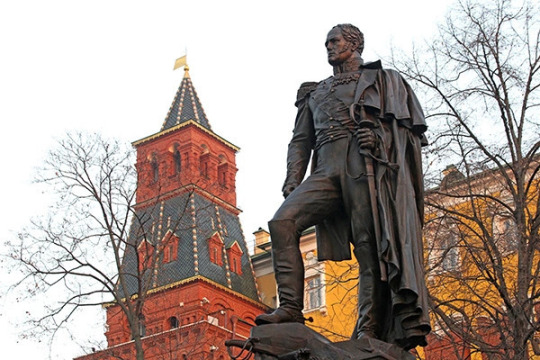
The monument is meant to celebrate his victory in the 1812 Russian invasion. He's holding a sword, proudly standing on top of his enemies' weapon.
The sculptors, however, have never seen the man in their life - all the people involved in the making are still alive and well (i think), so that should tell how new it is. The monument was opened for the public just a decade ago in 2014.
d. quote about this bust from the memoirs of Sophie de Choiseul-Gouffier: “No painter was able to properly capture the features of his face and especially his soft expression. Alexander didn’t like to pose for portraits and they were mostly done with some stealth. In this case sculpture have produced a better likeness. The famed Thorvaldsen made a bust of this sovereign worthy of a hand of such a remarkable artist.”
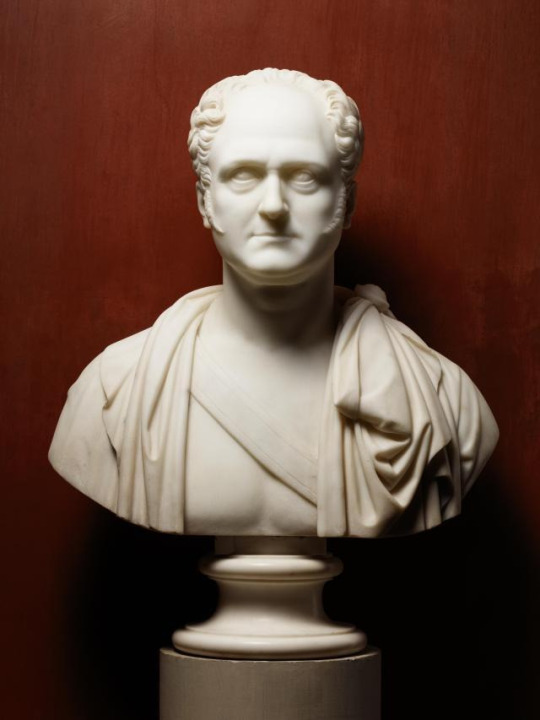
e. His family nickname might have been ‘our angel’ and the medal commemorating his death bears the inscription “Our angel is in heaven”, but did you know that to this day Alexander looks down on Sankt Petersburg as an actual angel, wings, cross, trampled snake and all? Alas, you cannot see it from the ground, the Alexander Column being so very tall, but the statue of the angel on top certainly seems to take after our sexy thrice-angel Emperor.
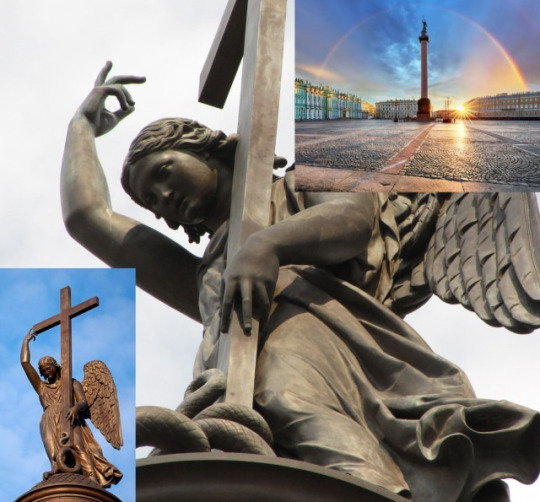
f. Apotheosis of Alexander! An eminently universal image, perfectly serviceable for his rise to the throne… of Napoleonic Sexyman Tournament.
It really looks like Peter and Catherine are instructing the Electorate. Gentlevoters, surely you wouldn’t dream of disappointing Sasha’s Grandmother and his scantily clothed giant of a Great-great-grandfather?
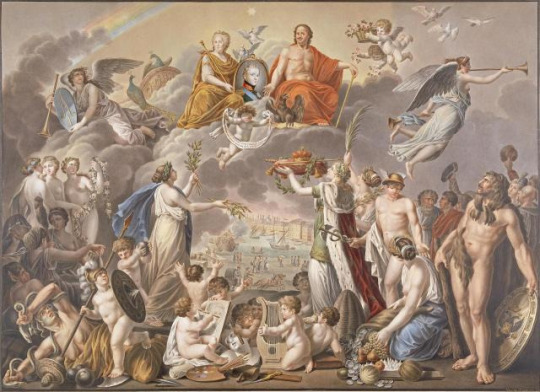
g. What is sexier than a man in a dress???

Thomas-Alexandre Dumas
a. “mustache”
b. “Tall! Daring! Swashbuckling! A devoted husband and father! Had a personal conflict with Napoleon! Also it was said he could, while holding onto a bar above his head, LIFT A HORSE WITH HIS THIGHS. How is he not on this list ten times already! Vote for General Dumas!”
c. “He was so hot that he inspired The Three Musketeers, The Count of Monte Cristo, and many more books that his son, Alexandre Dumas, wrote. He definitely looked the part of a sexyman, as he son recounts in his memoirs: "My father, as already stated, was twenty-four, and as handsome a young fellow as could be found anywhere. His complexion was dark, his eyes of a rich chestnut colour […]. His teeth were white, his lips mobile, his neck well set on his powerful shoulders, and, in spite of his height of five feet nine inches, he had the hands and feet of a woman. These feet were the envy of his mistresses, whose shoes he was very rarely able to put on." He could crush you between his thighs: "His free colonial life had developed his strength and prowess to an extraordinary degree; he was a veritable American horse-lad, a cowboy. His skill with gun or pistol was the envy of St. Georges and Junot. And his muscular strength became a proverb in the army. More than once he amused himself in the riding-school by passing under a beam, and lifting his horse between his legs." He was so badass he could beat 13 men with 4 and take all the enemy prisoner, and defend against hundreds of men on a bridge by himself. He performed these acts of valour numerous times in Italy. He was so formidable that the Austrians named him the "Schwartz Teufel", or the Black Devil, and his feat at the bridge earned him the moniker of "Horatius Cocles of Tyrol". He wasn't afraid to stand up to his morals and protest against unfair treatment. When unjust executions by the guillotine were happening outside his quarters, he closed the blinds of his curtains, earning him the nickname "Mr. Humanity". When in the Vendée, he complained about the wanton indiscipline in his troops. When in Italy, Berthier wrongly reported his actions as one of "observation" in St. Antonio. Dumas wrote to General Bonaparte that if Berthier was in the same position, he would have shit his pants. Dumas abhorred plunder, never exhorted the locals, and ordered the Directory agent who had come to persuade him otherwise be shot if he dared present himself to Dumas again. Integrity and a sense of moral justice is sexy, mark my words. For Dumas' final qualifier as a sexyman, look no further than this Tumblr heritage post (https://www.tumblr.com/petermorwood/133803437020/hortensevanuppity-elodieunderglass), with 300,000 notes and counting. And I quote: "- daddy general dumas was an immense fierce french warrior who was a 6 foot plus, stunningly gorgeous and charismatic Black gentleman - he invaded egypt - the native egyptians said “is this napoleon? this must be napoleon. we for one welcome our majestic new overlord” - then napoleon showed up - napoleon has all the presence of yesterday’s plain Tesco hummus - the native egyptians were like “… no… no, we’ve thought very hard and we’ll have General Dumas actually” - this did not make napoleon happy - in fact it made him jealous - napoleon felt so emasculated that he launched a campaign of revenge against General Dumas, including taking away his pension, that probably inspired a lot of Alexandre’s rather satisfying scenes in which fathers are nobly avenged and the money-grubbing villains are rubbed in the mud" I rest my case. Tl;dr: He was so hot he inspired multiple books, he was a stronk man who could crush you between his thighs or carry you like a sack of potatoes, and he was so badass that he could take on odds of 1 to 3. He had a foul mouth but a heart of gold and his actions were never self-serving. Posts relating to him on Tumblr have had 300,000 notes and counting. He is qualitatively and quantitatively qualified to be a sexyman.”
138 notes
·
View notes
Text






























taylor swift lyrics x colors x textiles in art – blue
Tim McGraw – Taylor Swift // Portrait of Marie-Joseph Peyre – Marie-Suzanne Giroust 💙 Tim McGraw – Taylor Swift // Lady in the Boudoir – Gustav Holweg-Glantschnigg 💙 A Place in This World – Taylor Swift // Portrait of Prince William Henry, Duke of Gloucester – Jean-Étienne Liotard 💙 Dear John – Speak Now // Young Woman in a Blue Dress – Jacopo Negretti 💙 State of Grace – Red // Portrait of Mrs. Matthew Tilghman and her Daughter – John Hesselius 💙 Red – Red // An Unknown Man – Joseph Highmore 💙 All Too Well – Red // Portrait of a Man with a Quilted Sleeve – Titian 💙 Everything Has Changed – Red // Portrait of the Marquis de Saint-Paul – Jean-Baptiste Greuze 💙 Starlight – Red // Mrs. Richard Brown – John Hesselius 💙 Run – Red // Judith with the Head of Holofernes – Felice Ficherelli 💙 This Love – 1989 // Fair Rosamund – John William Waterhouse 💙 Delicate – Reputation // Miss Elizabeth Ingram – Joshua Reynolds 💙 Gorgeous – Reputation // Marguerite Hessein, Lady of Rambouillet de la Sablière – workshop of Henri and Charles Beaubrun 💙 Dancing with Our Hands Tied – Reputation // George Albert, Prince of East Frisia – Johann Conrad Eichler
Cruel Summer – Lover // Peter August Friedrich von Koskull – Michael Ludwig Claus 💙 Lover – Lover // Lady Oxenden – Joseph Wright of Derby 💙 Miss Americana & the Heartbreak Prince – Lover // Portrait of Ivan Ivanovich Betskoi – Alexander Roslin 💙 Paper Rings – Lover // Young Woman in a Blue Dress – Jacopo Negretti 💙 London Boy – Lover // Queen Henrietta Maria with Sir Jeffrey Hudson – Anthony van Dyck 💙 Afterglow – Lover // Portrait of Prince Dmitry Mikhailovich Golitsyn – Fyodor Rokotov 💙 Christmas Tree Farm – Christmas Tree Farm // Portrait of Mary Ruthven, Lady van Dyck – Anthony van Dyck 💙 invisible string – folklore // Two Altar Wings with the Visitation of Mary – unknown artist 💙 invisible string – folklore // Portrait of Madame de Pompadour – François Boucher 💙 peace – folklore // Fair Rosamund – John William Waterhouse 💙 hoax – folklore // Portrait of Charles le Normant du Coudray – Jean-Baptiste Perronneau 💙 coney island – evermore // Portrait of the Marquis de Saint-Paul – Jean-Baptiste Greuze 💙 Carolina – Carolina // Mrs. Daniel Sargent – John Singleton Copley 💙 Bejeweled – Midnights // Elsa Elisabeth Brahe – David Klöcker Ehrenstrahl 💙 The Great War – Midnights // Portrait of Françoise Marie de Bourbon – attributed to François de Troy 💙 Hits Different – Midnights // Mrs. Benjamin Pickman – John Singleton Copley
#taylor swift lyrics x colors x textiles in art#blue#taylor swift debut#speak now#speak now taylor swift#red album#red taylor swift#1989#1989 album#reputation#reputation taylor swift#lover#lover album#folklore#folklore album#evermore#evermore album#midnights#midnights album#ts edit#tswiftedit#long post#taylor swift
405 notes
·
View notes
Text
"Who's that girl" DWM 268 (1998)
So, who would have played the Doctor if she'd been a woman from the first? DWM rounds up the likely ladies …

Hermione Baddeley 1963-66 Renowned for unsympathetic roles in both Brighton Rock and the dour 'kitchen sink'-styled Room at the Top, film veteran Baddeley made an enthralling Doctor - part dragon, part slightly dotty maiden aunt. Eternal juvenile Melvyn Hayes was 'unearthly' grandson Stephen Vivian Pickles 1966-69 Although much younger, and never a lead, the versatile Pickles had been a familiar TV face for 20 years (Harpers West One, etc) before being cast as Baddeley's successor. Her sprightly, elfin Doctor had a penchant for dressing-up, like a St Trinian's tomboy who never left school

Liz Fraser 1970-74 A comic actress familiar from several Carry Ons, Fraser's initial trepidation at taking on an ostensibly serious role soon dissipated. Her bossy, big-sisterly show-off of a Doctor was best paired with dippy companion Joe Grant (later Playgirl pin-up Robin Askwith) Frances de la Tour 1974-81 Gangling, piercing-eyed Shakespearean actress de la Tour played a tweedy, louche, Bohemian Doctor part-based on Virginia Woolf. Caused a minor sensation when she married the young actor who played the second incarnation of Time Lord companion Roman — Peter Davison

Jan Francis 1982-84 Despite rumours that the next Doctor might be played by a man (former New Avenger Gareth Hunt is hotly tipped), the youngest actress yet is cast. Fresh from middlebrow thirties drama The Good Companions, Francis made for a sporty Doctor in Lottie Dod-style tennis whites Lynda Bellingham 1984-86 Known to SF fans for her role as Barbara the Butcher in an episode of Jenna's 7, Bellingham's controversial Doctor was a loud, hectoring grand-dame of the theatre. Unceremoniously 'regenerated' following the Doctor's on- (and off-) screen inquisition in the epic Trial of a Time Lady

Pauline Melville 1987-89 Virtually unknown fringe cabaret and cult comedy artiste is surprise choice for 'back to basics' Seventh Doctor. Fan fears that series will become showcase for childish high-jinks up-ended when Melville stories adopt a sombre, down-beat mood, performed with conviction and gravitas Miranda Richardson 1996 The eldest in a successful line of acting siblings, a favourite of BBC producers since high-profile lead debut in revisionist biographical drama of notorious 20th century 'villain', makes a bid for American network stardom via lavish new big-haired version of Doctor Who. Star Trek actor Alexander Siddig plays love interest Dr Brian
#doctor who#classic doctor who#8th doctor#7th doctor#6th doctor#5th doctor#4th doctor#3rd doctor#2nd doctor#1st doctor#Miranda Richardson#Pauline Melville#Lynda Bellingham#Jan Francis#Frances de la Tour#Liz Fraser#Vivian Pickles#Hermione Baddeley
115 notes
·
View notes
Text

my introduction to how i write the dead poets boys ꩜✧˖°.
disclaimer 1: this is all my opinions and guesstimates on random things about them that are never specified!
disclaimer 2: the YEAR of the birthdays i set will depend on the year/time period in which i specify the fic to be in (usually modern), that being said the boys are juniors in high school (usually around 17) but if i do a college AU they’ll be 21. and the occupations i give them would be when they attend university not at Welton.
disclaimer 3: feedback is appreciated :)
꩜✧˖°.
Neil Perry
Full Name/Nickname: Neil James Perry
Physical Info: Brown Hair/Brown Eyes/6’0”
Age: 17/21
Birthday: September 17th
Favorites:
- Song: No Surprises by Radiohead
- Movie: The Perks Of Being A Wallflower
- Color: Forest Green
- Artist: Radiohead
Career Path/Occupation: Actor
Best Friends: Todd Anderson/Charlie Dalton
Love Language: Words of Affirmation
Parents/Siblings/Status:
- Father: Thomas Perry
- Mother: Marie Perry
- Sibling(s): N/A
- Status: Well Off
꩜✧˖°.
Todd Anderson
Full Name/Nickname: Todd Ethan Anderson
Physical Info: Dirty Blond-Brown Hair/Blue Eyes/5’10”
Age: 16/20
Birthday: November 2nd
Favorites:
- Song: Cherry Wine by Hozier
- Movie: Donnie Darko
- Color: Brown (Neil’s Eye Brown)
- Artist: Hozier
Career Path/Occupation: Writer
Best Friend: Neil Perry
Love Language: Physical Touch
Parents/Siblings/Status:
- Father: Chris Anderson
- Mother: Lilith Anderson
- Sibling(s): Jeffrey “Jeff” Anderson (19/23)
- Status: Well Off
꩜✧˖°.
Charlie Dalton
Full Name/Nickname: Charles Nathan Dalton, Charlie/Char/Nuwanda
Physical Info: Brown Hair/Brown Eyes/5’9”
Age: 17/21
Birthday: July 17th
Favorites:
- Song: Under Pressure by Queen, David Bowie
- Movie: Bohemian Rhapsody
- Color: Red
- Artist: Queen
Career Path/Occupation: Musician
Best Friends: Neil Perry/Knox Overstreet
Love Language: Acts of Service
Parents/Siblings/Status:
- Father: Charles Dalton
- Mother: Elizabeth Dalton
- Sibling(s): Mickey Dalton (21/25), Lincoln Dalton (12/16)
- Status: Rich
꩜✧˖°.
Knox Overstreet
Full Name/Nickname: Knox Alexander Overstreet, Knoxie/Knoxious/Lover Boy
Physical Info: Brown Hair/Brown Eyes/5’11”
Age: 17/21
Birthday: April 20th
Favorites:
- Song: Lover, You Should’ve Come Over by Jeff Buckley
- Movie: The Notebook
- Color: Maroon
- Artist: Jeff Buckley
Career Path/Occupation: Marriage Counselor
Best Friends: Charlie Dalton/Gerard Pitts
Love Language: Quality Time (basically all of them)
Parents/Siblings/Status:
- Father: Alexander Overstreet
- Mother: Adrienne Overstreet
- Sibling(s): Faye Overstreet (18/22), Michelle and Sabrina Overstreet (12/16)
- Status: Rich
꩜✧˖°.
Steven Meeks
Full Name/Nickname: Steven John Meeks, Stevie
Physical Info: Red Hair/Brown Eyes/5’7”
Age: 17/21
Birthday: January 9th
Favorites:
- Song: Sunday by The Cranberries
- Movie: Stand By Me
- Color: Blue
- Artist: The Cranberries
Career Path/Occupation: Doctor
Best Friends: Gerard Pitts/Knox Overstreet
Love Language: Gift Giving
Parents/Siblings/Status:
- Father: Barry Meeks
- Mother: Valerie Meeks
- Sibling(s): River Meeks (22/26), Harry Meeks (20/24)
- Status: Rich
꩜✧˖°.
Gerard Pitts
Full Name/Nickname: Gerard Evan Pitts, Pittsie
Physical Info: Brown Hair/Brown Eyes/6’0”
Age: 17/21
Birthday: June 25th
Favorites:
- Song: Head Over Heels by Tears For Fears
- Movie: The Shining
- Color: Yellow
- Artist: Tears For Fears
Career Path/Occupation: Art Director
Best Friends: Steven Meeks/Knox Overstreet
Love Language: Quality Time
Parents/Siblings/Status:
- Father: Peter Pitts
- Mother: Zoey Pitts
- Sibling(s): Victoria Pitts (11/16)
- Status: Well Off
꩜✧˖°.
Richard Cameron
Full Name/Nickname: Richard Don Cameron, Cameron
Physical Info: Red Hair/Green Eyes/5’9”
Age: 17/21
Birthday: March 14th
Favorites:
- Song: Vienne by Billy Joel
- Movie: Practical Magic
- Color: Purple
- Artist: Billy Joel
Career Path/Occupation: Mathematician
Best Friend: Charlie Dalton (barely)
Love Language: Words of Affirmation
Parents/Siblings/Status:
- Father: Richard Cameron
- Mother: Donna Cameron
- Sibling(s): Lilliane Cameron (16/20), Dexter Cameron (10/14)
- Status: Well Off
꩜✧˖°.
#coraline’s masterlist#coraline’s main page#how i write them#neil perry#anderperry#todd anderson#charlie dalton#knox overstreet#knarlie#steven meeks#gerard pitts#richard cameron#dead poets society
19 notes
·
View notes